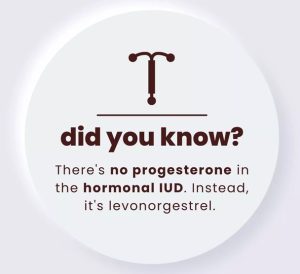Most birth control pills, patches, vaginal rings, interauterine devices, and implants contain a combination of the derivatives of the hormones estrogen and progestin [NOT progesterone – more below]. They work by mimicking these hormones in your body to fool your reproductive system into producing the following effects:
- Preventing your ovaries from releasing eggs
- Thickening your cervical mucus to help block sperm from fertilizing an egg
- Thinning the lining of your uterus, which makes it difficult for an egg to implant, should it become fertilized
However, your reproductive system does not exist in a bubble … it is connected to all of your other bodily systems, and therefore the Pill is capable of altering much more than your reproductive status. For example, women taking the Pill experience altered smell perception. It is this sense of smell that identifies pheromones in prospective partners that is part of the attraction between a woman and a man. Some studies have identified that the altered smell perception results in women making unsuitable choices in partners. Others have shown that when a woman stops taking the Pill, her original sense of smell returns resulting in her no longer being attracted to the partner she had chosen.
I strongly recommend every woman, especially teenage girls, read the book: The Pill – Are you sure it’s for you? by Jane Bennett & Alesandra Pope published by Allen & Unwin. It is easy to understand and provides insight into the affects of The Pill on the female body.
The Pill does not regulate hormones — it introduces synthetic substances which mask underlying imbalances. The “Mini-Pill” or progestogen-only pill has been recommended by some as an alternative that does not contain any oestrogen. However, it also does not contain progesterone. Words matter, and the word for the medication in hormonal birth control is progestin, not progesterone. It’s important because progestins act very differently on the brain and metabolism compared to progesterone.
There’s no progesterone in any type of birth control, including “progesterone-only” methods like implants and hormonal IUDs. Instead, all types of birth control contain progestins, which are only vaguely similar to progesterone.
The progestin in hormonal IUDs is levonorgestrel, which is derived from testosterone, so can cause androgen side effects like hair loss and weight gain.
Progesterone versus progestins
There are several important differences between real (body-identical) progesterone and progestins.
| Progesterone | Progestins |
|---|---|
| improves cardiovascular health | can cause high blood pressure |
| stimulates hair growth | can cause hair loss |
| has anti-androgen properties | can be androgenic or “testosterone-like” |
| generally good for mood and sleep | can cause anxiety and depression |
| may reduce the risk of breast cancer | increase the risk of breast cancer |
 Still confused? Think of it this way: Progestins and progesterone have the same beneficial thinning effect on the uterine lining but opposite effects in almost every other part of the body, including the breasts and brain.
Still confused? Think of it this way: Progestins and progesterone have the same beneficial thinning effect on the uterine lining but opposite effects in almost every other part of the body, including the breasts and brain.
In general, real progesterone has the advantage of being safer for breasts and usually better for mood.
You can read more about the crucial difference between progesterone and progestins, and pros and cons of hormonal IUDs in Lara Briden’s blogs.
Always do your research and speak to a qualified women’s health professional before deciding on the best and safest form of contraception.
Remember, it is your body, your life, your choice.
Source: https://www.larabriden.com/
